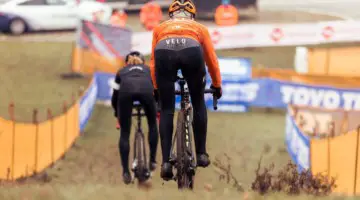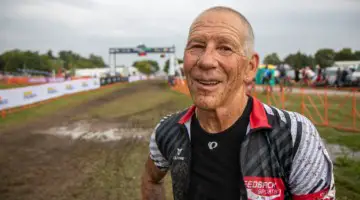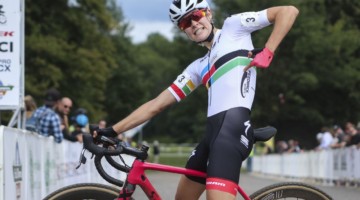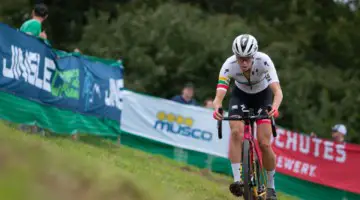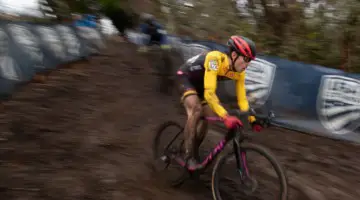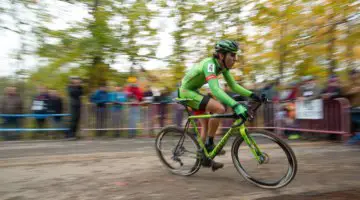It seems easy enough. Train in the late summer and early fall, then race, recover and repeat through Nationals. But how much form do you really have over the course of a cyclocross season? How much are you looking at the late-season weeks, beyond the next race in the local series? Do you have a plan of attack for the part of the season where things get tough?
JBV Coaching‘s Chris Mayhew helps you see the forest through the trees and talks in this week’s Training Tuesday about planning the shape of your coming cyclocross season.
by Chris Mayhew
I want to talk about the overall shape of your ‘cross season. I think there are big gains to be realized in ‘cross by making some big picture decisions about your season’s focus. Nailing those down drives the smaller weekly and daily decisions that need to be made. And a lot of the big mistakes I see athletes make are made at this more meta-level, so let’s address it up front. Over the next few weeks these columns will work down through the layers of race preparation and execution. But let’s start by dealing with the big picture now, and then in a few weeks end up talking about the details.
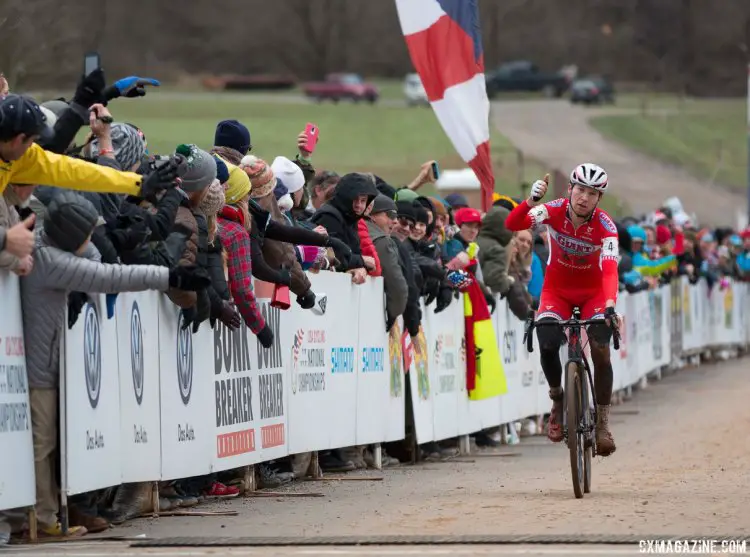
Whether it’s a podium at Nationals or a top spot in a local series, you have to look at your season’s big picture to get there. File photo of Logan Owen. Elite Men, 2016 Cyclocross National Championships. © Cyclocross Magazine
Let’s assume you are taking your July break, then after your break you did roughly six weeks of ‘cross specific intervals. What’s next? The number one question I like to ask my clients is “when do you want to come out swinging?” That drives almost every other decision from now ’till Nationals, or whenever you choose to end your season.
What I mean by that question is: when do you want to be in peak form, ready to do your best? The most common answer is “when my local series starts.” This is the first branch in your decision tree. What’s driving the need for such a question is that you have about six to eight weeks of form you can live off. Peak ‘cross racing weeks are about coming into the weekend fresh (I’ll define fresh in depth next week), which means not a lot of training during the week. After many weeks of that schedule (about six to eight) you’ll be out of fitness and need to reload. So you have to be judicious in when you start to spend all the money you’ve saved up, so to speak.
If your answer is early September, you’ll want to go from ‘cross specific preparation to a taper and then racing. Pretty simple, right? If your answer is late September or even October I’d tell you to keep training a bit, even if you plan to race on the weekends. There are several ways to do that. The mid-week work will stay the same, more or less. For the weekends the goal is to get in one good training day while still being rested enough to be able to produce the short power bursts that are critical to ‘cross. That may mean doing a workout on Saturday before a Sunday race. Not one that leaves you exhausted, but still lets you get a training day in. Maybe you race Saturday and then do a longer ride on Sunday, a great situation if you’re fortunate enough to have Saturday races available. The main idea is not to start spending your fitness too early in the season such that it’s not there when you need it in late October or early November.
What if you’re not focused on a series? Maybe you’re a roadie who just wants to use up some late road season fitness. Maybe you’ve never raced ‘cross and don’t know what you want to do besides race ‘cross this fall. Both are absolutely fine and a valid approach to the season. In both cases I’d tell you simply to be aware that once you stop training and start racing you’ll have about still have six to eight weeks of form to live off. After that you’ll come to the next decision branch in your tree.
Once you’re six to eight weeks into your season, what next? I’ve tweeted several times that cyclocross series are the bane of a coach’s existence. They are awesome and fun and keep you sharp. I’ve chased them every year since the late ’90s, I completely get it. But they also tend to drive the biggest mistake I see in athlete’s overall season structure.
If your season started in early September and now it’s early November, you probably haven’t done any focused training for the last two months. Coming in fresh every weekend, to maximize your short term power production, means doing progressively less and less training every week for weeks on end. This is when the wheels come off for so many athletes. They get tired and burned out digging deep into reserves every weekend. They’re losing aerobic fitness, often at a time when muddy, boggy courses most demand the most sustained power. Results get harder to come by, if at all. And yet there are races every weekend!
So what to do at this point? The most important thing is to have a plan ready ahead of time for this. The last thing you want to do is get two weekends past your breaking point and realize things are not fun anymore. For my road clients I tell them to feel free to pull the plug at some point in November and move on. They’ve ridden out their form, and ‘cross conditions are about to get truly “crossy” (e.g., cold and wet). There is absolutely no shame in ending your season here on your own terms.
For those that want to continue on to December and beyond, find a weekend away from racing, or at least races involved in your overall goals. Carve out a ten to fourteen day period where you can take a couple of days to heal up and get recovered and then start doing some training again. Get back to some threshold work, drive up your weekly hours a bit, do some long weekend rides, even if that means riding to or from a race. That’s actually a great way to keep racing but still do some training.
To put this in concrete terms, train ’till Labor Day, then start the race-and-recover cycle until early November or so. Then take a weekend off from racing. Use that ten to fourteen day block to recover and then put in some extra hours doing threshold work and some longer days on the weekend, even if that means riding to and from a local race. For me personally I’ll train until Labor Day, then start racing once on the weekends, but not coming into those races super fresh. Then in October I’ll start my race-and-recover cycle through Thanksgiving, at which point I’ll use a weekend off from racing to do some longer miles for a few days.
In either case the main points are to train hard, realize you have six to eight weeks to spend that fitness, and also to actively plan ahead for the end of that period as well.























